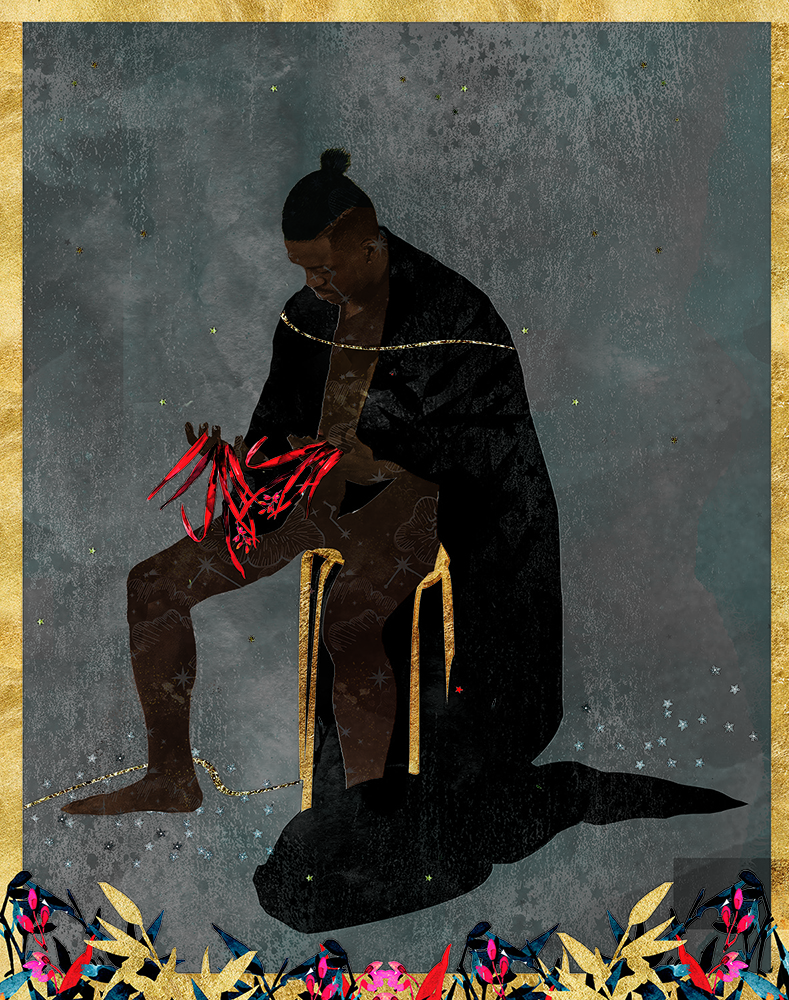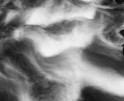Photographers on Photographers: Rohina Gandhi Hoffman in conversation with Carla Jay Harris
When I first saw Carla Jay Harris’ project Celestial Bodies at AIPAD (NYC) in 2019 I was spellbound. More than beautiful and graceful, her work was ethereal. Like a bashful vagrant, I conspicuously loitered by the Kopeikin Gallery booth, hoping I would have a chance to meet the artist. Ironically, I learned that she was from my hometown of Los Angeles. Emblematic of her stratospheric talent, it required a transcontinental journey for me to be introduced to someone that was practically my neighbor. Perhaps you really can’t go home again! I chatted online with Carla in June 2020 about her work and process.
Born in Indianapolis, IN, but raised traveling the globe as the child of a military officer, Carla Jay Harris’ social and artistic development was impacted tremendously by the geopolitical and natural environments she encountered. She fervently believes that space (physical and physiological) has a fundamental, lasting impact on personal identity. While the environment around us is constantly evolving, photography has the power to capture humanity in a place, in a moment – transforming a flicker in time into a lasting, appreciable statement. Carla’s work has been exhibited nationally and internationally at the California African American Museum, CA; the Los Angeles Municipal Art Gallery, CA; the Southern, Charleston, SC; Smack Mellon, Brooklyn, NY; and the Museum of Fine Arts Sherbrooke, Quebec, Canada. She has been the beneficiary of several grants and fellowships, including the Hoyt Scholarship, Resnick Fellowship and a grant from the Pasadena Art Alliance. Carla completed undergraduate coursework at the School of Visual Arts in New York, received her Bachelor’s degree with distinction from the University of Virginia, and her MFA from UCLA in 2015. She currently lives/works in Los Angeles, CA. Instagram: @carlajayharris
Rohina Hoffman is a fine art photographer whose practice uses portraiture and the natural world to investigate themes of identity, home, women’s issues, and adolescence.
Born in India and raised in New Jersey, Rohina grew up in a family of doctors spanning three generations. While an undergraduate at Brown University, Rohina also studied photography at the Rhode Island School of Design and she was a staff photographer for the Brown Daily Herald. A graduate of Brown University Medical School and resident at UCLA Medical Center, her training led to a career as a neurologist.
A skilled observer of her patients, Rohina was instilled with a deep and unique appreciation of the human experience. Her ability to forge the sacred trust between doctor and patient has been instrumental in fostering a parallel connection between photographer and subject.
Rohina published her first monograph Hair Stories with Damiani Editore (February 2019) accompanied by a solo exhibition at Brown University’s Alpert Medical School. Her monograph, Hair Stories, is held in many public collections and university libraries. Her photographs have been exhibited in juried group shows both nationally and internationally and she has received numerous awards. She has been published in Marie Claire Italia, F-Stop Magazine, The Daily Beast, Lenscratch, Shots Magazine, and Edge of Humanity among others. She lives with her husband, three children and two golden retrievers in Los Angeles. Instagram: @rohinaphoto
Celestial Bodies
My most recent body of work, Celestial Bodies, was inspired by my experience as a third culture kid. As a child, I spent a significant chunk of my developmental years living outside the United States – primarily in Italy and Germany. This was a surreal experience that permanently shifted my perception of belonging. Othered by race, language, culture, and nationality, I was drawn to mythology. Throughout history, mythology has served humankind’s need to understand its surroundings, nature and society. Through myth-making I have been able to tap into a sense of belonging that extends from a connection to universal cultural concerns and narratives.
In creating Celestial Bodies, I was influenced by the works of Romare Bearden, Jacob Lawrence, Lorna Simpson, Frida Kahlo and Gustav Klimt. Going forward, I intend to build out this work into a 10-12 image series of unique, large format prints loosely inspired by Milton’s Paradise Lost.
Rohina Hoffman: How did you get started in photography?
Carla Jay Harris: I got into photography after college. I moved back home and was a little bit adrift for a while. My mother suggested taking an art class to try and motivate me. We ended up taking a darkroom class together at the local community college. That class was the beginning of a lifelong interest in the medium. I pursued it casually at first, then I developed a commercial art practice and eventually pursued it artistically.
RH: Why photography?
CJH: I think of my interest in photography as an extension of my personality. I’ve always been a rather introspective/introverted person – a quiet observer. Picking up a camera to document what I witness was a natural entrée into artmaking for me.
RH: Why did you decide to pursue a MFA?
CJH: I did not study art as an undergraduate. My degree is actually in commerce. I wanted to get an MFA to fill in some of the gaps in my understanding of artmaking and art history. I also feel it benefited me tremendously to be able to dedicate 100% of my time/energy to art. Getting an MFA transformed my practice and opened a lot of doors for my career.
RH: Tell us more about Celestial Bodies. Where does the element of fantasy and mythology come from?
CJH: I have always been drawn to mythology. My whole family was interested in science fiction and fantasy. In southern Italy, I was exposed to Roman and Greek mythology. Celestial Bodies, is an on-going series of large-scale works on paper, bridges the gap between myth and reality. I employ a combination of photography, drawing, and illustration to achieve this effect. It is my hope that works such as these lead to the reimagining of society as more inclusive whole – a society grounded in belonging.
RH: I am fascinated by your process of making work and what you call the “thinking process”. Can you take us through it?
CJH: I’ve developed a multidisciplinary practice that includes photography, installation, collage, and drawing. This transformation was inspired by my desire to bring together my interests in image-making, space, and spectatorship. These themes continually inspire me and serve as a binding thread through all my works. My interest in installation is also rooted in my desire to create space for cross-cultural dialogue – creating such spaces, for me, is an outlet for political and social activism.
My creative process begins with a lengthy period of research and writing. I draw from scholarly research, interviews, local history and my family archives to ground my work in lived experiences. I journal and then choose a concept and research. I rely heavily on sketches and always make at least two before I start shooting. From there, I use the camera (in studio or on the street) to compose the foundational images of my work on film. Finally, I scan these images into my digital studio where they are combined with hand-drawn illustration and digital collage. My practice is “design heavy” and allows me to match my vision.
RH: Where do you find inspiration?
CJH: Everywhere – cinema, dreams, the work of other artists and more.
RH: Who are your photographic influences?
CJH: Too many to name – Lorna Simpson, Richard Avedon, Roy DeCarava just to name a few.
RH: You mention geography and place as being a recurrent theme in your work. Can you elaborate on that and does living in LA influence your work?
CJH: I moved to Los Angeles for graduate school in 2013 from New York. Overall it was a very positive shift, but it’s taken me a while to get used to making work in LA. I feel like the difference in culture and landscape from the East Coast to the West Coast was greater than I anticipated. I’m really just now starting to introduce elements of the CA environment into my work.
RH: What is the biggest challenge you face in making work?
CJH: Time and space. I’m a working artist. I’ve tailored my lifestyle to my practice as much as possible. Nevertheless, I still have very real constraints on how much of my day, my budget, etc. I can dedicate to my work. There is an ongoing tension between my vision and what realistically I can produce.
RH: What are you working on now?
CJH: I always work on two projects at once. Working this way keeps me engaged and assures that I always have an out if I start to feel frustrated with any particular body of work. Right now, the two projects I’m working on are Celestial Bodies and Bitter Earth. Celestial Bodies is the series of large-scale photographic works inspired by mythology I mentioned above. Bitter Earth is a collaborative project that I’m partnering with my aunt (and noteworthy historian) Brenda Stevenson* to complete. It’s a series of five interconnected installations arranged to resemble a home. Each installation considers a different era of the Black American experience – beginning with the middle-passage and ending in present-day. This is my first long term collaborative project. It’s been a rewarding learning experience that I feel has made the work more grounded and relevant overall.
*Dr. Brenda E. Stevenson is the Nickoll Family Endowed Chair and Professor in the Departments of History and African American Studies at UCLA. Her work is centered on race, gender, slavery, family and racial conflict in the U.S. and the Atlantic world.
RH: Why do you create?
CJH: My work is a refuge from the chaos and stress of everyday life and is an outlet and a constant source of inspiration.
** All artwork courtesy of the artist and Luis De Jesus Los Angeles.
Posts on Lenscratch may not be reproduced without the permission of the Lenscratch staff and the photographer.
Recommended
-
Anne Eder: The SeerDecember 14th, 2024
-
Bootsy Holler: ContaminatedDecember 10th, 2024
-
Jordan Eagles in Conversation with Douglas BreaultDecember 2nd, 2024
-
Interview with Owen McCarter and Drew Leventhal: “The Three-Eyed Fish” and Independent Photo Book PublishingNovember 20th, 2024
-
Kari Varner: Blueprints for Slaughter and GroundworkNovember 14th, 2024



































































